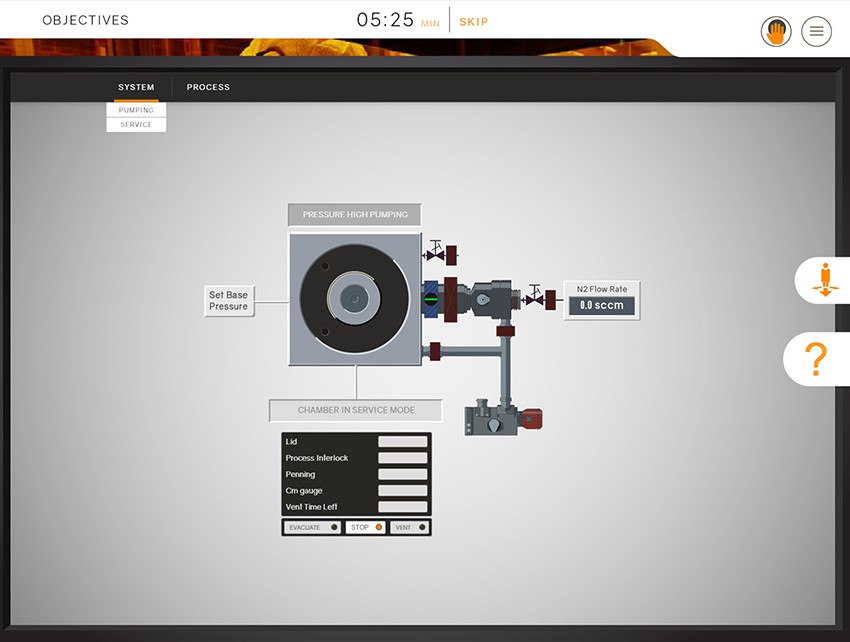Virtual FabLab
Description
Device
Platform
1. Lab training is a sparse resource in the real world. Even a top university, which can afford expensive equipment, can only provide limited access to the various groups of students who might require it. Many schools can’t afford a lab at all
2. Lab equipment is expensive, delicate and in certain cases hazardous. A small negligence can lead to bodily harm or equipment damage
3 Lab equipment and material procurement, maintenance, administration, set-up and clean-up involve huge costs and efforts.
Digital Agents Interactive worked with professors and Ph.D. students to design a web-based gamified 3D interactive state-of-the-art virtual fabrication lab. This online platform features complex recipes involving nanofabrication techniques like sputtering, atomic layer deposition, Plasma-enhanced chemical vapour deposition and more along with interactive hardware and software interfaces
Just like a lab assistant Virtual Fab Lab assists students with value-based annotations to carry out experiments along with safety & precautionary instructions
The solution is backed by analytics to enable faculty track and monitor student’s participation, engagement and results to help them with real-time feedback and assistance.
Hybrid Approach: The real and current purpose of virtual labs is not to replace traditional labs but to enhance the practical knowledge. The hybrid approach provides the benefit of both digital tools and lab bench activities. Virtual labs with the power of computerized models and simulations can prepare a student to perform safely & proficiently in a real lab scenario
24×7 access: Experiments in a virtual laboratory can be done at the student’s convenience and when he or she learns best. This provides greater flexibility to students and further improves knowledge retention
Real-time feedback: Students can repeat experiments anytime, improve their knowledge and overall results. All the results are recorded & communicated to teachers and students for rapid and constant improvements. Experiments no longer have a “single chance” option and students can analyse what went wrong immediately and give it another try
Latest & Up-to-date Equipment: Virtual labs have access to state-of-the-art technology when it comes to experimentation. With a virtual lab, students do not have to settle on obsolete, yet expensive, equipment because a school cannot afford to replace it consistently
Lower costs: Though there is an initial set-up cost associated with using virtual labs but the capital and maintenance costs are drastically reduced. This allows school to provide a better learning experience for students at a fraction of the cost








